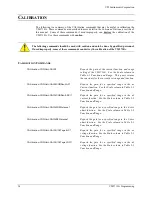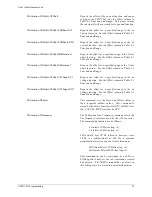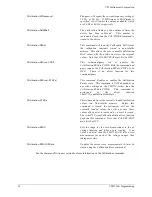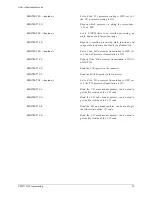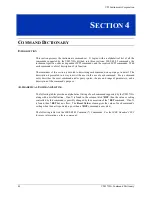
www.vtiinstruments.com
VM2710A Programming
25
TRIGger:SOURce EXTernal
trigger:source external
TRIGGER:SOURCE EXTERNAL
TRIG:SOURce EXTernal
TRIG:SOUR EXTernal
TRIG:SOUR EXT
trig:sour EXT
trig:sour ext
The following command is
not
correct because it uses part of the long form of
TRIGger
, but not
all the characters of the long form:
TRIGG:SOUR EXT
(incorrect syntax - extra "G"- only trig or trigger is correct)
All of the SCPI commands also have a query form unless otherwise noted. Query forms contain a
question mark (?). The query form allows the system to ask what the current setting of a parameter
is. The query form of the command generally replaces the parameter with a question mark (?).
Query responses do not include the command header. This means only the parameter is returned:
no part of the command or "question" is returned.
When character data is used for a parameter, both short and long forms are recognized. If the
command has a query form with character response data, the short form is always returned in upper
case. As an example, to find out what the current trigger source setting is use the following
command:
TRIG:SOUR?
The response would be:
EXT
This tells the user that the trigger is set to an external source.
Multiple commands can also be combined on one line. To do this, terminate one command with a
semicolon and start the next command with a colon. As an example, the trigger source can be set
to a positive edge and an output trigger line can be enabled as follows:
TRIG:SOUR EXT;:OUTPUT:TTLTRG1 ON
The IEEE-STD-488.2 Common Commands can be placed anywhere set off from the rest of the
command by a semicolon. They can also be placed alone on a line. For example, place the
*RST
command in front of a setting string as follows:
*RST;OUTP:TTLT 3;POL POS
Note that the
OUTP:TTLT
command set did not require a leading colon (:) because there was no
prior trunk of the SCPI tree.
























